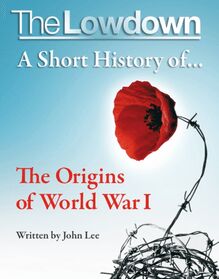-
 Univers
Univers
-
 Ebooks
Ebooks
-
 Livres audio
Livres audio
-
 Presse
Presse
-
 Podcasts
Podcasts
-
 BD
BD
-
 Documents
Documents
-
- Cours
- Révisions
- Ressources pédagogiques
- Sciences de l’éducation
- Manuels scolaires
- Langues
- Travaux de classe
- Annales de BEP
- Etudes supérieures
- Maternelle et primaire
- Fiches de lecture
- Orientation scolaire
- Méthodologie
- Corrigés de devoir
- Annales d’examens et concours
- Annales du bac
- Annales du brevet
- Rapports de stage
La lecture à portée de main
Vous pourrez modifier la taille du texte de cet ouvrage
Découvre YouScribe en t'inscrivant gratuitement
Je m'inscrisDécouvre YouScribe en t'inscrivant gratuitement
Je m'inscrisEn savoir plus
Vous pourrez modifier la taille du texte de cet ouvrage
En savoir plus

Description
Informations
| Publié par | Creative Content |
| Date de parution | 26 mars 2010 |
| Nombre de lectures | 0 |
| EAN13 | 9781906790622 |
| Langue | English |
Informations légales : prix de location à la page 0,0150€. Cette information est donnée uniquement à titre indicatif conformément à la législation en vigueur.
Extrait
THE LOWDOWN: A SHORT HISTORY OF THE WORLD CUP
By Mark Ryan
THE LOWDOWN: A SHORT HISTORY OF THE WORLD CUP
First published in 2010 By Creative Content Ltd, Roxburghe House, Roxburghe House, 273-287 Regent Street, London, W1B 2HA. Copyright © 2010 Creative Content Ltd
The moral right of Mark Ryan to be identified as the author of this work has been asserted by them in accordance with the Copyright, Designs and Patents Act, 1988.
All rights reserved. No part of this publication may be reproduced or transmitted in any form by any means, electronic or mechanical, including photocopying, recording or any information storage and retrieval system, without prior permission in writing from the publisher nor be otherwise circulated in any form or binding or cover other than that in which it is published.
In view of the possibility of human error by the authors, editors or publishers of the material contained herein, neither Creative Content Ltd. nor any other party involved in the preparation of this material warrants that the information contained herein is in every respect accurate or complete and they are not responsible for any errors or omissions, or for the results obtained from the use of such material.
The views expressed in this publication are those of the author and do not necessarily reflect the opinion or policy of Creative Content Ltd. or any employing organization unless specifically stated.
Typesetting by CPI Antony Rowe Cover Design by Daniel at HCT Design
ISBN 978-1-906790-62-2
www.creativecontentdigital.com
THE LOWDOWN: A SHORT HISTORY OF THE WORLD CUP By Mark Ryan
Every four years, cities and villages all over the globe come to a standstill to watch the most passionate sporting spectacle on earth: football’s World Cup. A TV audience of 260 million people watched the World Cup final between Italy and France in 2006. So many people watched the games in that tournament that the audience around the world came to a cumulative 5.9 billion in 54 countries. And 41 percent of those television viewers were women. Records will probably be smashed yet again at World Cup 2010 in SouthAfrica. But how did this phenomenon begin, this tournament that captures our attention like no other? And what are the standout moments in its history?
ORIGINS
Before they invented the World Cup, they had to invent football itself – or ‘soccer’ as it became known in some countries. The origins of the world’s greatest game are to be found in England. A rough form of football was played in the early 19th century, with huge numbers on each side. The rules of the game as we know it were more clearly defined by England’s Football Association in 1863. The FA established itself through five meetings at a London pub called the Freemason’s Tavern. There was a big argument over a proposal that players should be banned from handling the ball, tripping and kicking one another in the shins. Those who wanted the game to stay primitive went off and formed the Rugby Football Union instead. For the rest, Association Football – or soccer – was up and running.
But a global tournament wasn’t even a distant dream back then. Fifty-eight years passed from the first football match between rival countries and the first World Cup. England played Scotland in 1872; but the World Cup era didn’t dawn until 1930. So what kept them? FIFA - the Federation Internationale de Football Association - first met in 1904 to discuss a World Championship – then they dithered for 26 years. You could see the problem for the game’s world governing body. Before we could get to that first World Cup, football had to spread worldwide. As the 20th Century began, British coaches took the game into Europe, where it soon thrived in places like Hungary and Holland, Yugoslavia and The British Empire was powerful back then and traded all over the world. Where the Brits went, football went too.
Teams began to form in countries such as Argentina and neighbouring Uruguay. Styles varied. The British teams tended to base their game on long passes through the air towards the opposing goal. They relied a lot on the physical power of their players. The South Americans were often more skilful and they soon learned to wrong-foot opponents with clever body-swerves. They liked to keep the ball on the ground and show individual flair. But they could also pass the ball many times on their way to goal, as could the new teams on the European mainland. So whichstyle and country was the best in the world? It was nearly time to find out.
The most obvious place to hold an international tournament was the Olympic Games. But in the early 20th century, Olympic football tournaments mostly featured club sides and makeshift amateur teams. The First World War caused further delays in the creation of a truly international tournament. But in the 1920s the South Americans came to the party. The Olympics’s of 1924 and 1928 saw Uruguay carry off the soccer title. And that signalled football’s chance to go global at last.
But two leading French football administrators - one called Jules Rimet and another named Henri Delaunay – weren’t satisfied with the idea of staying exclusively under the Olympic umbrella. Rimet was the President of the French Federation and Delaunay was the Secretary. They didn’t see why the Olympics should steal all soccer’s glory. Rimet and Delaunay wanted a tournament where professional players could take centre stage and break free from the restrictions of amateurism.
1930
At the Amsterdam Olympics in 1928, plans for the first World Cup were finally laid.
-
 Univers
Univers
-
 Ebooks
Ebooks
-
 Livres audio
Livres audio
-
 Presse
Presse
-
 Podcasts
Podcasts
-
 BD
BD
-
 Documents
Documents
-
Jeunesse
-
Littérature
-
Ressources professionnelles
-
Santé et bien-être
-
Savoirs
-
Education
-
Loisirs et hobbies
-
Art, musique et cinéma
-
Actualité et débat de société
-
Jeunesse
-
Littérature
-
Ressources professionnelles
-
Santé et bien-être
-
Savoirs
-
Education
-
Loisirs et hobbies
-
Art, musique et cinéma
-
Actualité et débat de société
-
Actualités
-
Lifestyle
-
Presse jeunesse
-
Presse professionnelle
-
Pratique
-
Presse sportive
-
Presse internationale
-
Culture & Médias
-
Action et Aventures
-
Science-fiction et Fantasy
-
Société
-
Jeunesse
-
Littérature
-
Ressources professionnelles
-
Santé et bien-être
-
Savoirs
-
Education
-
Loisirs et hobbies
-
Art, musique et cinéma
-
Actualité et débat de société
- Cours
- Révisions
- Ressources pédagogiques
- Sciences de l’éducation
- Manuels scolaires
- Langues
- Travaux de classe
- Annales de BEP
- Etudes supérieures
- Maternelle et primaire
- Fiches de lecture
- Orientation scolaire
- Méthodologie
- Corrigés de devoir
- Annales d’examens et concours
- Annales du bac
- Annales du brevet
- Rapports de stage

















